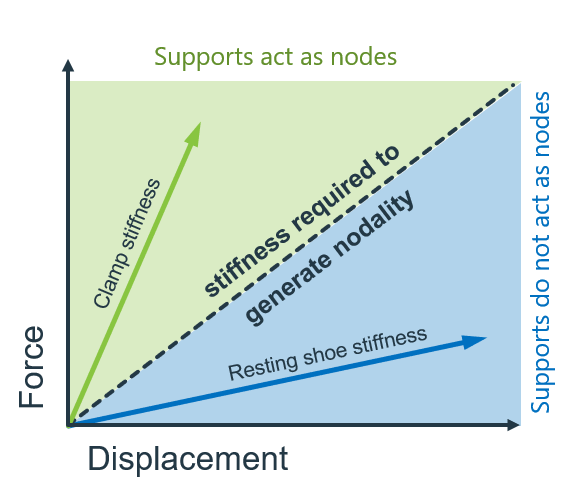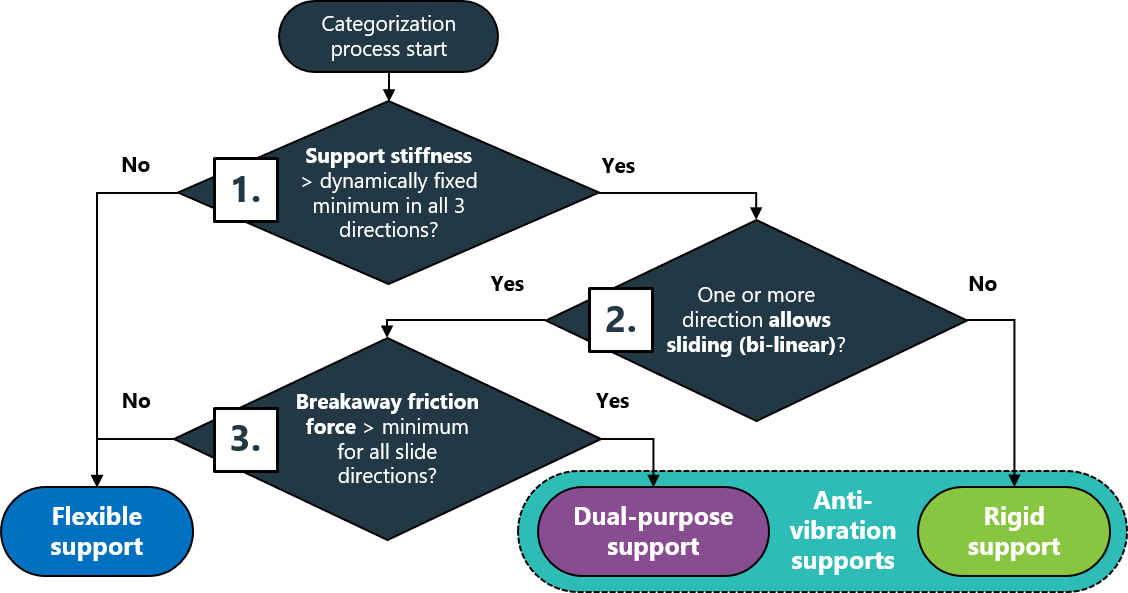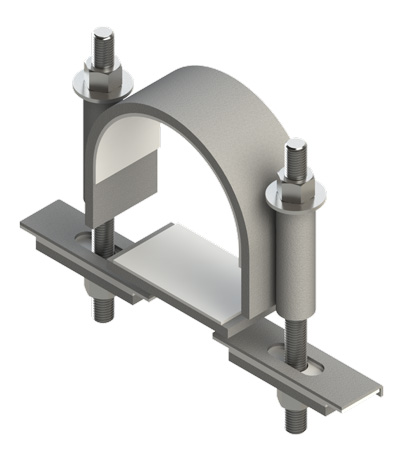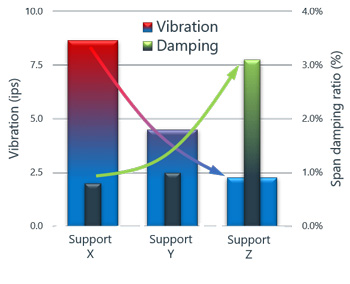Knowledge Center
- Downloads
- Technical Newsletter
- Recommended Guidelines and References
- Specifications
- Technical Papers
- Tools and Calculators
- Training
- Articles, Tips and Requirements
- An Integrated Approach to Manage Vibration Risks
- Design Requirements for Reciprocating Compressors
- Evaluating Compressor Operating Risks
- Five simple methods to check reciprocating compressor performance
- Important Differences in Pulsation Software
- Liquid Pumping Systems (Including Liquid Pipelines)
- Noise Regulations Around the World
- Noise Risks in the Gas Industry
- Performance Monitoring Examples
- Pipe Support Stiffness, GMRC Project
- Piping Vibration Design Considerations
- Piping Vibration Examples
- Structural Vibration and Ways to Avoid It
- Tips for a Successful Project (Vibration Control)
- Transient Conditions on Small-Bore Piping
- Vendor Requirements for Piping Vibration & Integrity Assessment
- Vibration-induced fatigue (whitepaper)
- Vibration Issues Affecting Gas Compressor Facilities
- Ask the expert
Pipe support performance – ask the expert
Q&A from our pipe support evaluation webinar "Shake, rattle and grow (part III)"
By Jordan Grose and Timothy Bootsveld
Watch the recording Download the technical paper
The answers below were given in the context of the webinar and do not address all aspects of the issues discussed.
For more comprehensive information or application support, we strongly encourage you to contact the experts directly.
Contents [ hide ]
1 Videos
Videos shown in the webinar:
2 Definition of anti-vibration support
We define ‘anti-vibration supports' as follows:
Supports that (when installed on an adequately stiff base) are capable of forcing the vibration nodes of a gas-filled pipe’s fundamental bending mode to manifest at the support location, for all vibrating modes up to 15 Hz, and for pipe wall thicknesses up to Sch. XS.
3 Classification of pipe supports
 |
|
For pipe supports to dynamically restrain piping, (= vibratory node is enforced at the support location), the support must restrain the pipe with a sufficiently high stiffness. Stiffness, ‘K’, is the measure of the force require to achieve a unit displacement (lb/in, N/m) |
How can I know if a pipe support has nodality?
For most pipe supports out there, we don't know if it will provide nodality or not. This is a reason why we do the testing, so that's part of the problem of what we're trying to address: there’s a gap in the industry in how we categorize these supports.
Testing can determine if there is nodality or not, and we do provide a testing methodology in the GMRC paper we've referenced.
On the anti-vibration support definition, why does it use a gas-filled pipe?
The definition was indexed to the gas-filled pipe because the mass of gas is negligible compared to the mass of the pipe.
For liquid systems, the mass of the fluid is not negligible compared to the mass of the pipe. The nodal frequency/minimum stiffness can be corrected for this using the density of the fluid particular to your application.
Can you confirm, the discussed definition for ‘anti-vibration,’ is it from Wood, and where did the Hertz come from?
Yes. This definition was put forward by Wood. I would recommend you look up the paper that we wrote for the Gas Machinery Conference, “Shake rattle and grow – empirical data on the effectiveness of vibration supports in a thermal growth environment.”
We go through a very in-depth discussion as to how we came to the Hertz. The Hertz is high enough that it avoids a lot of the low-frequency flow-induced turbulence-based broadband energy that you typically see in liquid and even gas systems. I've seen some companies use seven Hertz. It’s a good number to keep you away from low-frequency vibration problems.
Have you reviewed I-Rod/u-bolt pipe supports? How would you evaluate them?
Yes, we included 'Nu-bolts' in our testing and found that they are classified as 'flexible' supports because they do not have the minimum stiffness in all three directions (decision point #1 of the flow chart). So, they have their place, but they are not anti-vibration.
Please refer to our paper Shake rattle and grow, which includes more results than shown in the webinar, and we're continuing to do more research and testing even up to today.
 |
| Classification flow chart for pipe supports – flexible, rigid and dual-purpose supports |
4 Applications
In what environments can DamperX clamps be used?
The current DamperX products can be used for temperatures between -17°C to 204°C (1°F to 400°F).
Can Wood's anti-vibration supports be used on high-speed and multiple-speed-range machines, for example, compressors around 1000 RPM?
 |
|
Wood ThermaGlide anti-vibration clamp for thermal growth environments |
We recommend selecting a support that can maintain nodality for these frequencies. You'd want to space your supports appropriately. If you can't find a support that can maintain nodality up to that Hertz, you might consider using a support that has a higher amount of damping.
How will these anti-vibration supports work in areas with winter conditions?
Our clamps have a temperature range from -17°C to 204°C (1°F to 400°F), depending on the lining that you select. The same applies to the shoes. For conditions outside this range, please contact us directly.
Can Wood’s anti-vibration clamps be used in hazardous areas?
Generally, yes. It depends on what type of hazard, but they can be used in most petroleum, chemical and natural gas type facilities.
Do these supports work with liquid pipes too?
Yes, our clamps work on liquid systems, too.
5 Effects of support types
If you restrain the pipe to prevent vibration, will this increase the stress in your system? How do you balance both these requirements of holding down the pipe and remit static stresses?
Yes, if you hold down the pipe with an anti-vibration support, you will create stress problems unless the pipe and support are allowed to slide. That's why we have introduced both:
- ThermaGlide anti-vibration sliding supports that both control vibration, while also having sliding capability to reduce pipe stress in the system, and;
- The concept of a bilinear pipe support, to allow for accurate modeling of anti-vibration pipe supports in a pipe stress model
We discuss this in-depth in Shake rattle and grow part I, where you can learn how to accurately model these types of pipe supports in your pipe stress model, and how to account for the sliding capability of these anti-vibration dual-purpose supports.
Can we use spring washers with adequate stiffness as a damper spring washer?
We don't recommend it. We've seen people try, but you'd have to implement it in a way that the stiffness is always in contact with the pipe. It can be problematic ensuring the spring washer stiffness exceeds the stiffness minimums. We have seen installations in the past that failed because the pipe lifts off from the support, thus removing the vertical stiffness from the supporting structure.
We prefer the clamp design and do not supply spring washers due to these implementation issues. We provide calibrated torque specifications that we find is a simpler solution to maintain the hold-down friction force you need. We don't recommend using the spring washer method.
Would the rigid support (contestant 2) break away with steel on steel friction?
If we continued to increase the pulling load on the pipe, the pipe would eventually be pulled through the clamp. However, we only pulled up to a load equal to the maximum allowable load given by the manufacturer and did not observe sliding up to that load level.
6 How to model supports
How do you model the sliding support in Caesar II?
Please find out how to model sliding supports or other anti-vibration supports in Caesar II accurately by watching part I of this webinar, where this topic is covered extensively.
7 Support features and details
 |
|
Pipe support performance test results – damping and vibration control |
Do Wood supports use Fabreeka?
Fabreeka is a material that is often used in lining clamps. It is very popular in North America.
The answer is no; we do not use Fabreeka in our supports. We have tested numerous materials as liners for our clamps, including Fabreeka, and have found that very few lining materials provide any damping benefit at all. The DamperX materials we use in our products provide the most damping on the market, while also having good properties for industrial environments.
Is ThermaGlide a trademark?
Yes, it is. It's one of the ways we use to categorize our anti-vibration products that have the thermal sliding capabilities.
Do you supply data sheets on how to apply DamperX clamps?
Yes, we provide data on where and how they can be used. Please contact us directly for detailed specs.
8 Video: damping liner test
-
Pipe support performance – ask the expert
{content}
Related Pages
Webinar: Shake, rattle and grow I (2022 update) • Webinar: Shake, rattle and grow – part II • Webinar: Shake, rattle and grow – part III • Shake, rattle and grow – empirical data on the effectiveness of vibration supports • Pipe Clamps, incl. DamperX™ and ThermaGlide™ •
Free webinar
Learn how to select and design vibration control solutions that work – using real-world data and case studies. Register now



